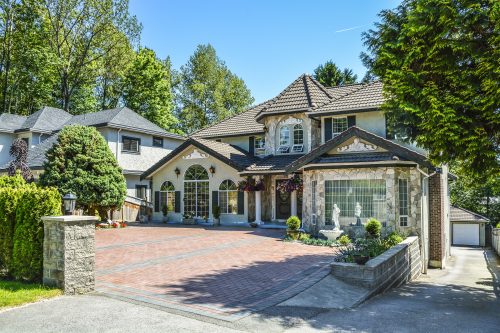A wet look paver sealer is a paver sealer that makes pavers look wet. Wet look sealers will also enhance and protect the surface of the pavers with a low gloss to high gloss finish.
The best wet look sealer is an acrylic concrete sealer. Different types of acrylic sealers will provide a different type of wet look finish:
- Water based wet look sealer: Very few water based acrylic sealers will make the pavers look “wet”. You can use a water based acrylic sealer to achieve a low to high gloss finish, but they won’t darken the pavers to make them look wet.
- Solvent based wet look sealer: The resins in solvent based acrylic sealers are designed to darken the surface of the pavers to make them look “wet”. They will also help to achieve a low gloss to high gloss finish.
Best Wet Look Paver Sealers
The best wet look sealers, based on sealer reviews, are:
- Eagle High Gloss Sealer (average 4.6 star review)
- Armor AR350 Wet Look Sealer (average 4.8 star review)
- Armor AR500 High Gloss Sealer (average 4.9 star review)
- Enduraseal SB Acrylic Sealer (average 4.5 star review)
- Rust-Oleum Wet Look Sealer (average 4.2 star review)
When should you use a wet look paver sealer? You should use a wet look sealer if:
- You want to darken the color of the pavers to bring out any dull and faded coloring.
- You want a low gloss to high gloss finish.
- You want to protect your pavers against deterioration from surface abrasion.
- You want to protect the color of your pavers and prevent them from fading.
Wet Look Paver Sealers
There are a few things to consider when choosing and applying a wet look sealer.
- Are your pavers currently sealed? If your pavers aren’t currently sealed then you can seal your pavers with either a water based wet look sealer or a solvent based wet look sealer. If your pavers are currently sealed, and the old sealer is still visible on the surface of the pavers, then you want to stay consistent with what you used. Water based acrylic sealers need to be re-coated with a water based acrylic sealer, and solvent based acrylic sealers need to be re-coated with a solvent based acrylic sealer. Mixing the two will result in coating failure. If you want to switch from a water based so a solvent based, or a solvent based to a water based, then you need to make sure that all of the old coating has been removed.
- Are your pavers dry? Acrylic sealers are sensitive to moisture so you want to make sure that your pavers are completely dry during the time of application. If it recently rained, or if a pressure washer was used to clean the pavers, then you want to make sure the pavers are allowed to dry for at least 24 hours before sealing.
- What type of pavers do you have? Wet look sealers can be applied to concrete pavers, but if your pavers are made from red clay brick, you may want to consider a penetrating sealer (Silane Siloxane water repellent) instead. Red clay brick pavers tend to be very porous and allow for large amounts of moisture to come through the pores. Sealing red clay brick with an acrylic sealer can result in coating failure.
- How old are the pavers? If your pavers are recently installed then you need to make sure that they can be sealed. Some manufacturers suggest immediate sealing, and others require that you wait a year. Sealing pavers outside of their suggested guidelines can result in coating failure or discoloration of your pavers.
Wet Look Paver Sealer Issues
Pavers and wet look sealers are very predictable sealers. There are only a few things that can go wrong with a wet look sealer, and most of those problems are preventable.
- Blushing (white haze)- This occurs from delamination, and delamination is caused by an inability to bond or the presence of moisture. This can be avoided most of the time with proper surface preparation. In some severe cases, this will happen if too much moisture is moving up through the concrete. Check with the manufacturer if blushing occurs.
- Peeling – This doesn’t happen with acrylic sealers unless there is something already present in the pores that is causing the acrylic not to be able to penetrate and bond. This could happen if you use an acrylic latex sealer because acrylic latex sealers are paint and should always be avoided.
- Bubbling – This is caused when an acrylic sealer is applied to pavers when the paver surface or air temperature is too hot. Apply acrylic sealers in the late afternoon or early evening to prevent this from happening.
- No Gloss – If you are applying a high gloss sealer and don’t see a high gloss finish then you may need another coat. Two coats are always suggested for porous surfaces, and in some cases the application may need to vary slightly to account for porosity. Always check with the manufacturer for application suggestions.

